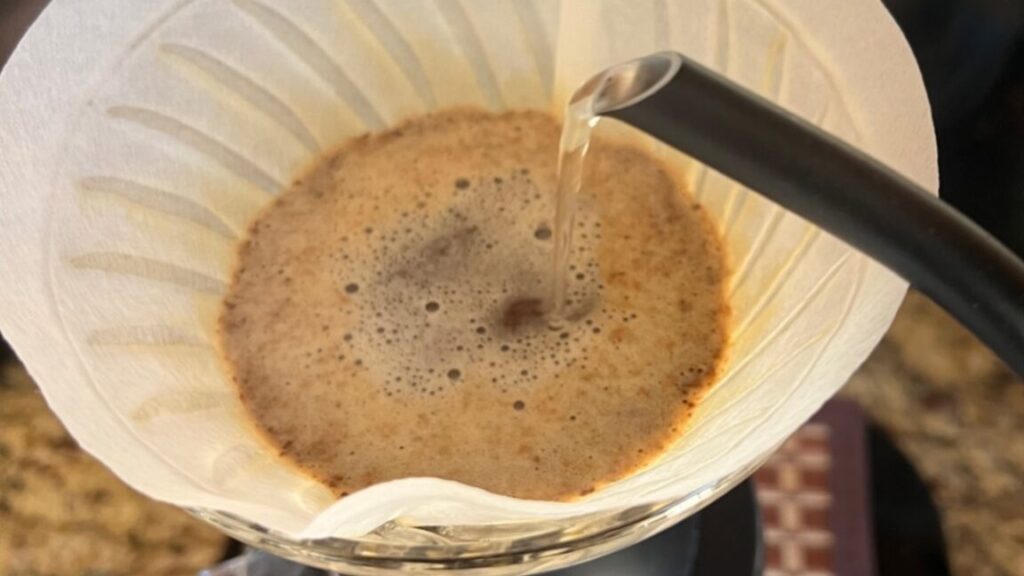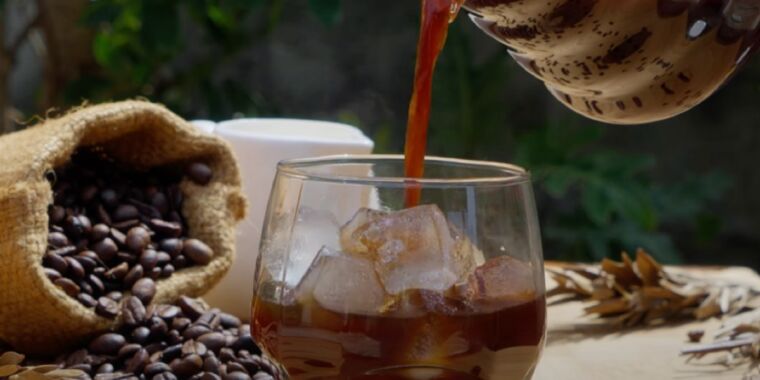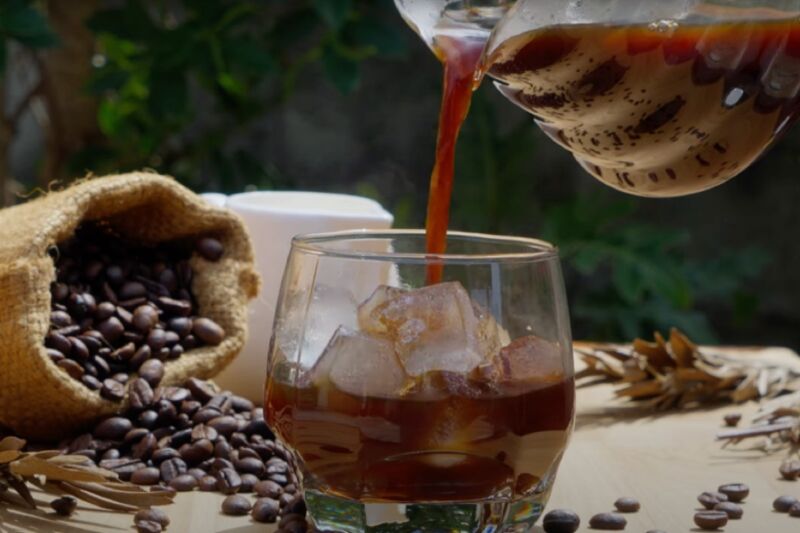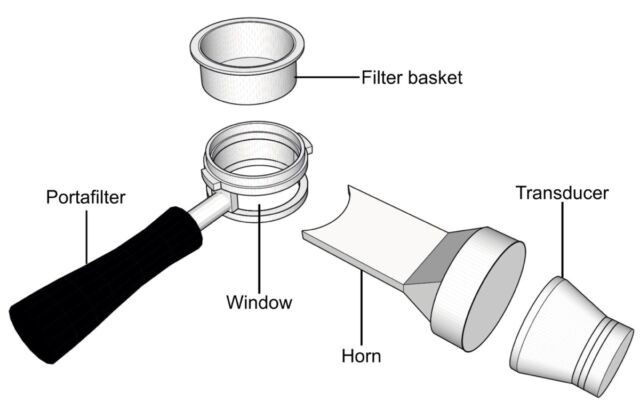Fewer beans = great coffee if you get the pour height right
Based on their findings, the authors recommend pouring hot water over your coffee grounds slowly to give the beans more time immersed in the water. But pour the water too slowly and the resulting jet will stick to the spout (the “teapot effect”) and there won’t be sufficient mixing of the grounds; they’ll just settle to the bottom instead, decreasing extraction yield. “If you have a thin jet, then it tends to break up into droplets,” said co-author Margot Young. “That’s what you want to avoid in these pour-overs, because that means the jet cannot mix the coffee grounds effectively.”

Smaller jet diameter impact on dynamics. Credit: E. Park et al., 2025
That’s where increasing the height from which you pour comes in. This imparts more energy from gravity, per the authors, increasing the mixing of the granular coffee grounds. But again, there’s such a thing as pouring from too great a height, causing the water jet to break apart. The ideal height is no more than 50 centimeters (about 20 inches) above the filter. The classic goosenecked tea kettle turns out to be ideal for achieving that optimal height. Future research might explore the effects of varying the grain size of the coffee grounds.
Increasing extraction yields and, by extension, reducing how much coffee grounds one uses matters because it is becoming increasingly difficult to cultivate the most common species of coffee because of ongoing climate change. “Coffee is getting harder to grow, and so, because of that, prices for coffee will likely increase in coming years,” co-author Arnold Mathijssen told New Scientist. “The idea for this research was really to see if we could help do something by reducing the amount of coffee beans that are needed while still keeping the same amount of extraction, so that you get the same strength of coffee.”
But the potential applications aren’t limited to brewing coffee. The authors note that this same liquid jet/submerged granular bed interplay is also involved in soil erosion from waterfalls, for example, as well as wastewater treatment—using liquid jets to aerate wastewater to enhance biodegradation of organic matter—and dam scouring, where the solid ground behind a dam is slowly worn away by water jets. “Although dams operate on a much larger scale, they may undergo similar dynamics, and finding ways to decrease the jet height in dams may decrease erosion and elongate dam health,” they wrote.
Physics of Fluids, 2025. DOI: 10.1063/5.0257924 (About DOIs).
Fewer beans = great coffee if you get the pour height right Read More »



